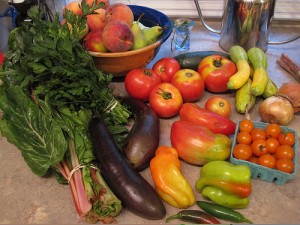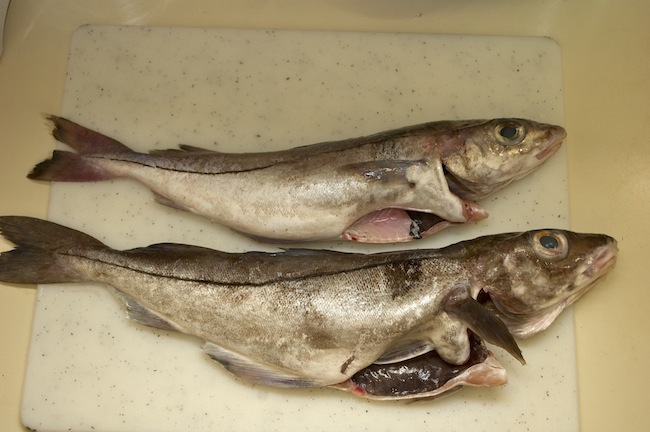Spend a little time in the presence of a local food advocate and you’ll hear a string of acronyms beginning with CS: Community Supported Agriculture (CSA), Community Supported Bakery (CSB), Community Supported Restaurant (CSR), Community Supported Winery (CSW), Community Supported Fishery (CSF).
What is all this community support about and what do these programs really mean?

In the mid-1980s, the philosophy of community support for farms and farmers landed on American soil after several decades of parallel yet independent development in Europe and Japan. Community supported agriculture (CSA) is a locally based model of food distribution that is built on a close association between growers and consumers. Together they share the risks and benefits of food production.
Traditional forms of community supported agriculture have a network of consumer members or subscribers who pay at the beginning of the growing season for a share of the projected harvest. Then for a period of 12 to 20 weeks (depending on the farm, the products, and the growing season), members get weekly deliveries of produce and/or other products.
Recently a wide range of variations on the original program has emerged, offering very different products and alternative payment and distribution models. CSA programs traditionally provided fruit and vegetable boxes with occasional flower additions, like those offered here.
Now it is possible to sign up for grain shares or grain and bean shares (here and here), for example. In the market for bread and wine? Check out a community supported bakery or a community supported winery. And for your main course, you can sign up for a meat (and eggs) share.
I thought I had seen pretty much every variation on a theme until the term “Community Supported Restaurant” popped up. Several small restaurants have been able to generate funding from their communities through subscription or membership programs similar to CSAs.
One of the new formats for community support that I find most interesting, since we live in a port city, is that of community supported fisheries. There are several now active on the East Coast and in Alaska, but I have yet to find one operating out of Puget Sound. It might be fun to experiment with a crab share or fin-fish share, but unfortunately for those you have to LIVE in Alaska to participate.
Alan Yen, a friend of ours living in Boston, signed up for Cape Ann Fresh Catch CSF out of Gloucester, MA. The fish that are distributed through Cape Ann Fresh Catch are sustainably caught in the Gulf of Maine. Like most conventional community supported food subscriptions, the shares are purchased in advance for weekly or bi-weekly delivery to a convenient distribution site.
There are two shares available: whole fish and fillet. With the whole fish option, Alan gets 4-6 pounds of fish each delivery. He may choose the fillet option in the fall and then he’ll get 2 pounds of fish fillets. Depending on the “catch of the day” – the fish are processed and delivered the day they are caught – Alan could get cod, hake, haddock, pollock, whiting, monkfish, or flat fishes like yelllowtail flounder and grey sole.
We’ll let him tell his story:
[jj-ngg-jquery-slider gallery=”FishCSA” width=”650″ height=”471″ center=”1″ tags=”FishCSA” effect=”fade” pausetime=”4000″ controlnavthumbs=”nextgen_thumbs” directionnav=”true” thumbsgap=”5″ order=”sortorder” thumbscontainerheight=”55″ captionOpacity=”0.80″ ]
Last week I got 2 whole fish, two whole haddock – with heads. One was nearly two feet long and the other was a bit smaller. I froze the larger one and ate the smaller one.
The day of the pick up an email comes with a suggested recipe. Last week it was some sort of fish stew, but right now I’m just cooking for myself so I made miso soup with the head. Then I cut the rest of the fish into 3 pieces and fried it.
If the whole fish share seems to be too much work, I may go to a fillet share. As a cook, I know what to do with the other parts – like the heads – however I expect the fillet option to be more popular with people who are in a hurry. The first week I got fillets only – two big pieces of fish – probably about the size of the large fish.
The distribution points are really convenient. I pick up at a restaurant about 10 minutes away from my house. They know how to handle fresh fish and keep it properly refrigerated. There are all kinds of pick up points in a 30- to 40-mile circle around Gloucester.
Gloucester is the oldest fishing town in the US, and while I don’t know the names of the fisherman or the fishing vessel, I do know where the fish was caught.
Alan will keep us posted on his subscription and update us on his cooking experiments.
Check out the “Alphabet Soup” of community supported food options in your area. You’ll find them to be one of the best ways to get fresh, wholesome, good food and to support the farmers, fishermen, bakers, and restaurateurs who bring it to you.
More information:
How Do I Love Thee, My CSA? Let Me Count the Ways
Sitka’s Community Supported Fisheries shortens the distance between local fishermen and local plates
Boat-to-Table Fishing CSAs Catching On
What’s a Community Supported Restaurant?
Photo credits:
Veggie CSA – lexmccall
Fish CSF – Alan Yen


Gail – thank you for this fun piece! We love seeing how our fish is prepared, especially whole fish shares. We’d love to submit a recipe for any follow-up, piece you do, etc.
Heather,
Thanks for reaching out! We think CS(A-B-F-R-W)s are pretty cool!
Alan will keep us posted on your goodies.
Best,
Gail N-K
The Real Bread Campaign has a list of British CSBs (and a few elsewhere) on its website
Chris,
Obviously you Brits are way ahead of us Yanks. Love the idea of community supported anything!
Thanks,
Gail N-K